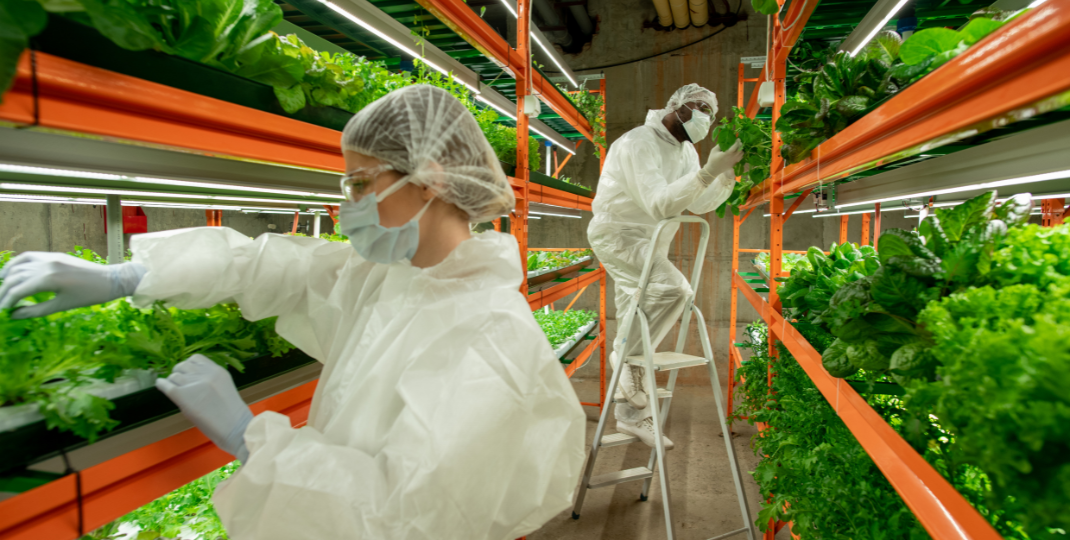Single cell protein algae, also known as microalgae, are a diverse group of microscopic plants that have the potential to revolutionize the global food industry. These tiny organisms are rich in essential nutrients, such as proteins, vitamins, and minerals, making them an ideal source of sustainable and renewable food. With their ability to grow rapidly in various environments, including ponds, bioreactors, and even wastewater, single cell protein algae offer a promising solution to tackle the ever-growing challenge of feeding the world's population. In this article, we will explore some examples of single cell protein algae, highlighting their unique characteristics and potential applications in the field of food production.

Examples of Single Cell Protein Algae
Some examples of single-cell protein algae include chlorella, spirulina, and diatoms. Chlorella is a green freshwater microalgae that contains high levels of protein, vitamins, and minerals. Spirulina is a blue-green microalgae known for its rich protein content and essential amino acids. Diatoms are a type of single-celled algae that have silica shells and are often found in marine environments. These microalgae are considered potential sources of sustainable protein as they can be grown in controlled environments using less land, water, and resources compared to traditional livestock farming.

How is single cell protein algae different from other types of algae?
Single cell protein algae, also known as SCP algae, is different from other types of algae primarily because it is specifically grown for its high protein content. SCP algae is cultivated to maximize its protein production and minimize other components such as carbohydrates and lipids. This makes it a highly efficient and sustainable source of protein as it can provide a concentrated and nutritionally dense protein source. On the other hand, other types of algae may not necessarily be optimized for protein content and can have varying compositions with differing amounts of protein, carbohydrates, lipids, and other nutrients.
What are the potential applications of single cell protein algae?
Single cell protein algae have the potential to be utilized in various applications. They can be used as a source of alternative protein for human consumption, especially in regions facing food insecurity or protein deficiency. The high protein content and nutritional profile make them suitable for food supplements, animal feed, and aquaculture. Additionally, single cell protein algae can be used in the production of biofuels as they can efficiently convert sunlight and carbon dioxide into lipids and carbohydrates. Furthermore, they have potential applications in bioremediation by removing pollutants from water bodies and in the pharmaceutical industry for the production of various compounds such as antioxidants and anti-inflammatory agents.
Are there any known health benefits associated with consuming single cell protein algae?
Yes, there are several known health benefits associated with consuming single cell protein algae. Firstly, algae is a rich source of essential nutrients such as vitamins (A, C, and B complex), minerals (calcium, iron, and magnesium), and amino acids needed for optimal bodily functions. It also contains antioxidants that can help protect cells from damage caused by harmful free radicals. Additionally, algae has been found to have anti-inflammatory properties, which can support a healthy immune system and reduce the risk of chronic diseases like heart disease and cancer. Moreover, some studies suggest that certain types of algae may aid in weight management by promoting feelings of fullness and reducing calorie intake. Overall, incorporating single cell protein algae into one's diet can offer various health benefits.
How does the cultivation process for single cell protein algae differ from other types of algae?

The cultivation process for single cell protein algae differs from other types of algae primarily in its purpose and method. Single cell protein algae are grown specifically for their high protein content, which can be used as a sustainable and nutritious food source. Unlike other types of algae that may be cultivated for biofuel production or water purification, single cell protein algae cultivation single cell protein algae examples focuses on optimizing the growth conditions to maximize protein synthesis. This involves providing an optimal mix of nutrients, controlling temperature and pH levels, and ensuring sufficient light intensity. Additionally, the harvesting process for single cell protein algae involves separating the cells from the media and concentrating the biomass to obtain a protein-rich product.

Are there any environmental considerations when it comes to producing single cell protein algae?
Yes, there are several environmental considerations when it comes to producing single cell protein algae. First, the cultivation of algae requires water resources, and if not managed properly, it can contribute to water scarcity and depletion. Additionally, the use of fertilizers and pesticides in algae production can lead to water pollution and negatively impact aquatic ecosystems. The energy source used for algae cultivation is also crucial, as it can determine the overall carbon footprint of the process. If renewable energy sources are not utilized, the production of single cell protein algae could contribute to greenhouse gas emissions and climate change. Therefore, it is important to implement sustainable practices and technologies in order to minimize the environmental impacts associated with algae production.
Can single cell protein algae be used as a sustainable alternative to traditional protein sources?
Single cell protein algae, such as Spirulina and Chlorella, have the potential to be a sustainable alternative to traditional protein sources due to several reasons. These microalgae can be cultivated using less land, water, and resources compared to conventional livestock farming. They have a high growth rate and can be grown in various environments, including deserts and wastewater. Algae also have a high protein content, essential amino acids, and are rich in vitamins, antioxidants, and minerals. Furthermore, they can be easily harvested and processed into different forms such as powders or supplements. Therefore, utilizing single cell protein algae could address the growing global demand for protein while reducing the environmental impact associated with traditional protein sources.

Are there any current research or development efforts focused on improving single cell protein algae production and utilization?

Yes, there are ongoing research and development efforts focused on improving single cell protein (SCP) algae production and utilization. SCP refers to the use of microalgae as a source of protein for various applications such as food and feed. Researchers are exploring methods to enhance the productivity of SCP algae by optimizing cultivation conditions, genetic engineering techniques, and strain selection. They aim to improve nutrient uptake efficiency, maximize biomass yield, and increase protein content in algae cells. Additionally, efforts are being made to develop cost-effective downstream processing technologies for efficient extraction and utilization of SCP algae proteins. The goal is to overcome the challenges associated with scalability, sustainability, and economic viability to harness the full potential of SCP algae as a renewable protein source.
Examples of Single Cell Protein Algae: Exploring the Potential of Microorganisms for Sustainable Food Production
In conclusion, single cell protein algae holds great potential as a sustainable and nutritious source of food and feed. With various examples such as Chlorella, Spirulina, and Haematococcus, these microorganisms have proven to be highly efficient in converting sunlight and nutrients into valuable proteins. Their ability to grow rapidly in diverse environments, requiring minimal resources and producing minimal carbon emissions, makes them an attractive solution to address the growing global demand for food while reducing the ecological footprint. Moreover, single cell protein algae offer a wide range of health benefits due to their high protein content, essential amino acids, vitamins, and antioxidants. With further research and technological advancements, it is foreseeable that these examples of single cell protein algae will play a significant role in ensuring food security and promoting sustainable development in the future.
